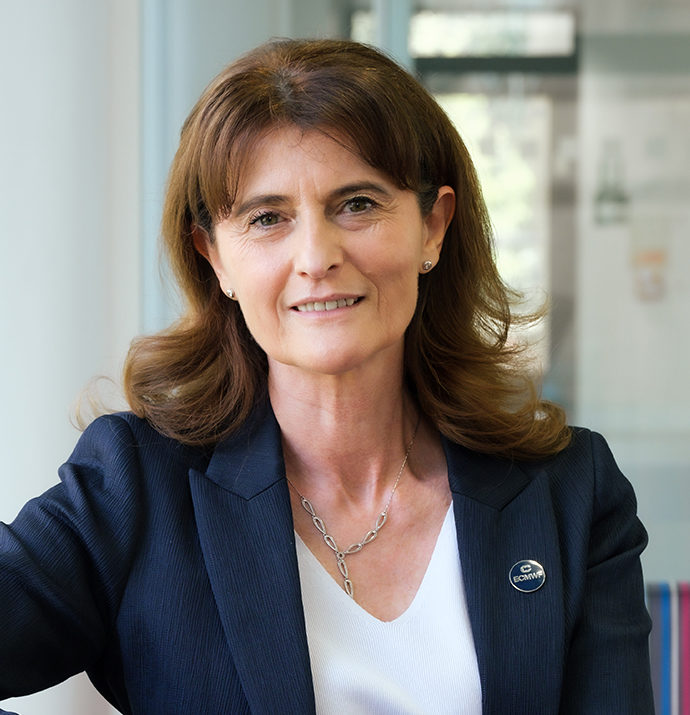 The EU’s Destination Earth (DestinE) initiative, which aims to build a digital replica of our planet, has entered a new phase. ECMWF is one of three key players in DestinE, together with the European Organisation for the Exploitation of Meteorological Satellites (EUMETSAT) and the European Space Agency (ESA). We are providing the first two high-priority digital twins of Earth and the Digital Twin Engine, which are at the heart of DestinE. The aim is to achieve highly accurate representations of climate developments and extreme weather-related events that can be used in decision-making, with unprecedented levels of interactivity and the possibility to run bespoke simulations to test ‘what if’ scenarios. To this end, we have involved 90 institutions across Europe, with a leading role played by our Member and Co-operating States in DestinE. Last month, the European Commission activated the initial DestinE system. In this second phase, our first two digital twins, ESA’s core service platform, and EUMETSAT’s data lake are becoming operational. DestinE is expected to continuously evolve by extending its operations and developing further components through co-design of applications with a wide range of users. By 2030, it should be able to make a full interactive digital replica of Earth available.
The EU’s Destination Earth (DestinE) initiative, which aims to build a digital replica of our planet, has entered a new phase. ECMWF is one of three key players in DestinE, together with the European Organisation for the Exploitation of Meteorological Satellites (EUMETSAT) and the European Space Agency (ESA). We are providing the first two high-priority digital twins of Earth and the Digital Twin Engine, which are at the heart of DestinE. The aim is to achieve highly accurate representations of climate developments and extreme weather-related events that can be used in decision-making, with unprecedented levels of interactivity and the possibility to run bespoke simulations to test ‘what if’ scenarios. To this end, we have involved 90 institutions across Europe, with a leading role played by our Member and Co-operating States in DestinE. Last month, the European Commission activated the initial DestinE system. In this second phase, our first two digital twins, ESA’s core service platform, and EUMETSAT’s data lake are becoming operational. DestinE is expected to continuously evolve by extending its operations and developing further components through co-design of applications with a wide range of users. By 2030, it should be able to make a full interactive digital replica of Earth available.
It is clear that DestinE is closely connected to our core activities: developing the best possible global numerical weather predictions and making them available to a wide range of users. This will enable DestinE to benefit from advances in weather prediction we develop in-house, including the increasing use of machine-learning techniques. But DestinE goes beyond that by focusing in on small regional scales, in the Weather-Induced Extremes Digital Twin, and on long timescales, in the Climate Change Adaptation Digital Twin. A feature article in this Newsletter presents the current state of play of our contribution to DestinE.
The high-resolution global modelling used in DestinE relies on progress in our physical modelling systems. An example of this is our work on an updated ocean and sea-ice model. This will first be used to produce a new generation of ocean reanalysis, ORAS6, which will be used in our next reanalysis ERA6, planned to start production early next year. It will also be introduced into our weather forecasting operations in next year’s upgrade to Cycle 50r1 of the Integrated Forecasting System (IFS). Details on this work can be found in two feature articles in this Newsletter. Another article sets out the operation of the European Weather Cloud (EWC): a community cloud computing platform jointly operated by ECMWF and EUMETSAT. The EWC is, for example, used by ECMWF for a joint machine learning project with Member and Co-operating States. One news article is a review of the ECMWF ‘Weather Discussion’, which celebrated its tenth anniversary last month. This weekly internal event focuses on improving forecasts for the benefit of all users. It covers a wide range of our activities, ranging from our operational and DestinE weather forecasting outputs to machine learning and Copernicus results.
Florence Rabier
Director-General
